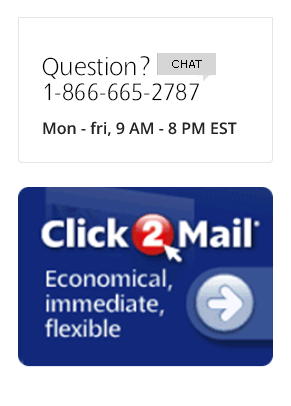So far in this seven-part series we have talked about knowing your audience and your market, giving your audience what they want, mailing consistency, and Return on Investment (ROI). Now that you have gathered all of this information you can start to develop a strategy for executing your mailings. Let’s briefly review:
1. Understanding the market and your audience – Determine who your audience is, what your audience wants or needs, and how much your audience can afford. Then determine who else is offering the same goods or services, how much they’re charging, and how they are marketing.
2. Give your audience what they want – Once you know what your audience wants, give it to them through the right offer, call to action, mailer format, copy, graphics, etc.
3. Consistency – Be consistent in your colors, themes, core values, and mailing frequency. Mail often enough that you stay top-of-mind with your audience and create familiarity with your brand.
4. Keep in mind your ROI – Paying attention to the return you’re getting on your mail investment will help you maximize your efficiency, increase your effectiveness, and grow your success.
The decisions you’ve made in each of the previous four steps set the foundation for your direct mail campaign strategy. Think of your strategy like a GPS that gives you step-by-step directions to your destination. Trying to navigate without it, you could end up driving around for hours. Similarly, without a direct mail marketing strategy you have no direction to guide you to your end goal of making sales (and no way to know if/when you get there!).
So now it’s decision time: Should you send a jumbo postcard with lots of photos and a coupon, or should you send a smaller, simpler postcard? Should your call to action be a QR code, or a reply card? Should you use Every Door Direct Mail (EDDM) or purchase a targeted mailing list? The answer to all of those questions is: It depends. It depends on what you’re trying to achieve – on your strategy.
To see how successful direct marketers let strategy guide their mail campaigns, let’s consider a few examples:
* Tracy is a real estate agent who wanted to stay top-of-mind with her clients. Using a mailing list that includes all of her clients, prospects, friends, family, and colleagues, Tracy sent out a newsletter including useful information such as new listings, local market information, and a community events calendar. A newsletter is a great resource for offering information and staying top-of-mind – a great strategy for meeting Tracy’s goals.
* Craig is a landscaper and wanted to bring in new customers, expanding his business into a new home development. Using EDDM he sent out an 8.5″ x 12″ over-sized postcard with pictures of his work, list of services, and a coupon. He knew it was important to tell the recipients exactly what he could do for them and offer them a special discount – again, his strategy dictated his decisions.
* Collin is an accountant who wanted to target new businesses, establish himself as thought leader, and make businesses aware of the services he offers. He chose a targeted mailing list of newly formed businesses and sent an 8.5″ x 11″ letter explaining the benefits of his services and offering a free consultation.
Because these marketers knew their audience and their market, and had set a target ROI, they were able to come up with a strategy that would achieve their goals. To strategically plan your mail campaign, visit our website today at Click2Mail.com.





